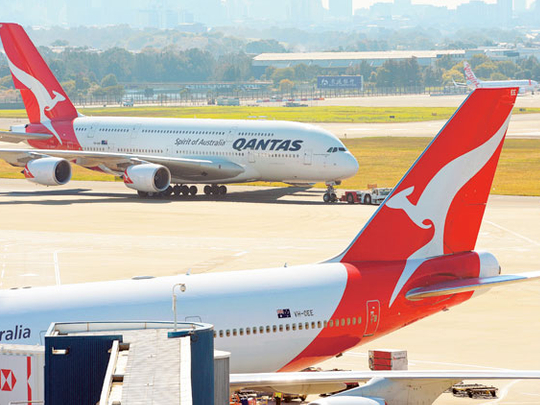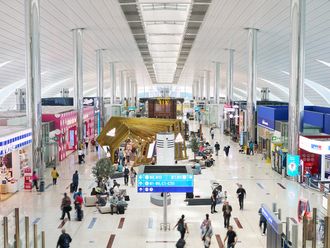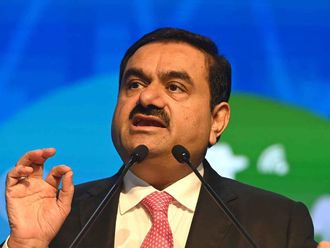
Dubai: The Emirates-Qantas partnership has boosted the Australian airline’s performance less than six months into the alliance as Emirates passengers increasingly choose to fly Qantas across Australia compared to Qantas’ previous alliance partners.
Alan Joyce, Qantas Group CEO, highlighted passenger codeshare traffic as he declared on Thursday that Australia’s largest airline was back in the black after last year’s A$244 million loss, according to a Qantas statement.
Nicknamed ‘the flying kangaroo’, Qantas reported A$6 million net profit after tax for the 2012/2013 financial year. Underlying profit before tax increased from A$95 million to A$192 million.
The Australian financial year starts July 1 and ends June 30.
Since Qantas and Emirates tied up earlier under a codeshare agreement, Qantas has switched its European-bound hub from Singapore to Dubai.
Joyce stated codeshare bookings on the Emirates network are running at twice the level of previous Qantas alliance networks to Europe. He added that bookings on the Qantas Domestic network by Emirates passengers had increased around three times the amount of previous alliance members.
Qantas previously partnered with British Airways, Cathay Pacific, Air France, and Iberia.
Better than expected results at Australia’s largest airlines were largely driven by cost cutting measures and profits among three of its four major business segments, Joyce stated.
Qantas Domestic, Jetstar — the airline’s budget carrier — and Qantas Loyalty were profitable too.
Joyce reported that the airline maintained its 65 per cent share of the domestic market through Qantas Domestic and Jetstar. The two business segments had combined domestic earnings in excess of A$450 million.
Qantas Domestic underlying earnings before interest and taxes (EBIT) was down 21 per cent to A$365 million.
Qantas International recorded an underlying EBIT loss of $246 million — nearly half the loss reported in 2012.
Turnaround plan
Joyce stated the airline was two years into its five-year turnaround plan to make Qantas International profitable.
“The Emirates partnership is the latest and most important element of this strategy,” he stated.
Daniel Tsang, Founder and Chief Analyst at Hong Kong-based aviation consultancy, Aspire Aviation, said the Emirates alliance gave Qantas one-stop access to more than 30 destinations across Europe.
“Through Qantas, Emirates has access to 55 domestic destinations with close to 5,000 weekly fights,” Tsang told Gulf News.
He added that better than expected results and the 50 per cent reduction of losses in Qantas International showed the strength of the new alliance.
The Emirates-Qantas pact is a game changer, he said.
Meanwhile, Rico Merkert, Senior Lecturer in Aviation Management at the University of Sydney Business School, said it was too early to judge the financial contribution of Emirates to Qantas. “However, it is clear that the alliance was improving passenger numbers,” he said, adding that the Emirates partnership would continue to provide Qantas with leverage.
Emirates drove a 50 per cent surge in frequent flyer redemptions on partner airlines in the last quarter of the 2012/2013 financial year, Joyce stated, adding that almost half a million Qantas customers have travelled through Dubai so far.












